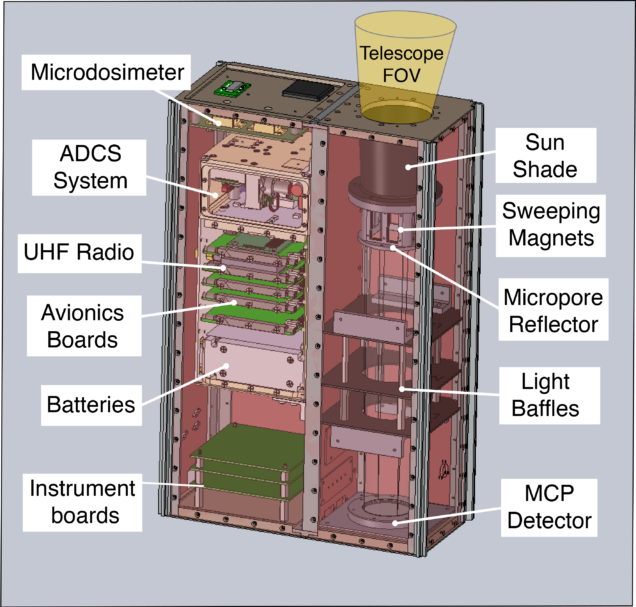X-Ray Instrumentation
Many phenomena in the near Earth plasma environment can be traced via X-rays that they release. When energy stored in magnetic fields is liberated via magnetic reconnection, X-rays are released at the reconnection site. When high energy charged particles from the solar wind come into contact with neutral particles in Earth’s atmosphere and transfer their charge to these neutrals, X-rays are also released. As such, X-ray imaging and detection systems in the space environment are rapidly proliferating, with a focus on higher and higher resolution instruments to probe smaller and smaller length scales of X-ray releasing processes. Since X-rays penetrate material very easily, designing X-ray imaging and detection systems poses many interesting engineering and physics problems that I find particularly satisfying to solve.
Currently I support the CuPID X-Ray imaging satellite mission. The CuPID (Cusp Plasma Imaging Detector) Cubesat Observatory is a cubesat (satellite about the size of a toaster oven) equipped with a wide-field soft x-ray telescope that is the first of its kind to be placed into orbit. It is designed to image the polar cusps of Earth’s magnetosphere to measure X-rays emitted by charge exchange processes when solar wind plasma strikes neutral atoms in Earth’s outer atmosphere. On the team I am responsible for flight software support and developing a ground data processing pipeline.


Left- Artist’s rendition of the CuPID cubesat. Right – CAD model of spacecraft layout. Image credit Walsh et. al. 2021